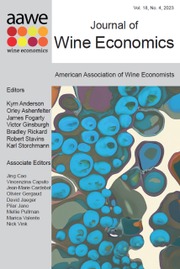The Académie du Vin Library consistently publishes exceptionally well-researched books, and this latest offering is no exception. The author, Rosemary George, is not just a Master of Wine, but she was one of the first women to attain the title (in 1979). She has written 13 other books, including several others from the Classic Wine Library. She’s an expert with both her extensive knowledge and her literary skill.
When most people hear the name Roussillon, they associate it with the larger Languedoc-Roussillon region, which was joined administratively in 1972. For many years, its unique identity was masked and overlooked, because in the Languedoc-Roussillon region, only 10% of the wines come from Roussillon itself. This book illuminates Roussillon’s own distinctive terroir and styles. Within Roussillon, wines were often synonymous with Vin du Natural (VDN). This association is not entirely unfair, as the first three AOCs in Roussillon were among the first ever in France, in the 1936 batch, and all three were VDNs: Rivesaltes, Banyuls and Maury. It wasn’t until 1971 that Roussillon was awarded its first appellation d'origine contrôlée (AOC) for Vin Sec (dry wine).
What is VDN? George expertly explains the process to make VDN, and the different styles winemakers can choose. Simply put, VDN is a sweet fortified wine, similar to Port. Many may be surprised to learn that Roussillon’s VDN has a history that long predates Port. The process of mutage, adding spirit to grape must, to arrest the fermentation, was not developed in the Duoro, but rather in Roussillon, in the 13th century. While Vin Doux Naturel has long been the most recognized wine style from the region, contemporary consumer trends favoring lower sugar and lower-alcohol options, as well as a shift toward nonalcoholic beverages, have depressed the sales of fortified wines, including VDNs. Roussillon has not been immune to the broader trend of historically sweet wine regions embracing the production of drier wines. But for those seeking an in-depth exploration of VDN, this book will not disappoint.
In addition to exploring wines, George delves into the rich history of the Roussillon. While it may be widely known that long ago Bordeaux bought wines from Algeria, then a French Colony, when their wines needed bulking up, it was new to me that after the Algerian War of Independence in 1962–1963, Roussillon’s ripe wines were often used, replacing those from Algeria. The history lessons from this book alone are worth the price of admission.
The key red grape variety in Roussillon is Grenache Noir, for both VDN and Vin Sec. Carignan, Syrah, Mourvèdre and Cinsault round out the top five. For the white wines, Grenache Blanche and Grenache Gris are most important, while Macabeo follows. George describes so many other less planted varieties, including a couple I had never before even heard of.
Haute Valeur Environment (HVE) is mentioned repeatedly. HVE is an environmentally friendly style of agriculture promoting biodiversity and sustainability. Many producers are adopting these practices. The weather is favorable, making biodynamic, organic and sustainable standards much easier to meet than in more challenging climates. But even in a Mediterranean climate with 2,530 hours of sunshine, not all is easy in Roussillon; there are eight different winds that affect the terroir. Some of these can be quite powerful, as they have recorded winds of 214 km per hour (133 mph)! And wild boars love to eat grapes, necessitating vigilance among farmers.
True to the format of the Classic Wine Library regional series, the bulk of the prose is dedicated to detailing producers across the towns of Roussillon. Most of these locations George visited in person, although much of the book was written during the pandemic, so some visitations were not possible or limited, which is fully disclosed. I particularly appreciated George’s candid assessment of producers, with one memorably described as leaving “an impression of a rather unwieldly dinosaur and an organization that had once had a more dynamic past.”
George addresses the business dynamics of the Roussillon wine industry, exploring the ongoing reduction in vineyard sizes—a pressing concern. However, the region’s affordability has opened avenues for new, young winemakers seeking opportunities; almost all are making high quality and exciting dry wines.
Will this book enjoy wide appeal? Truthfully it may not, which is a shame, but that is not a reflection on the quality of George’s work. It’s because Roussillon is a small—and for some people, obscure—region. But this book will be wonderful for people studying wine at a Masters (be it MW of MS) level, and a great resource for anyone planning travel to the region. Of course, a lover of VDN should also acquire this book.
There is much more in this book that will educate even serious wine experts. What is so wonderful about the Académie du Vin Library is that they are willing to publish books like this that clearly will not have the economic success of a Wine 101 book, yet are important to offer wine knowledge to hungry learners. I wholeheartedly recommend this book to all lovers of wine, and please, try the wines too, they are really great.


